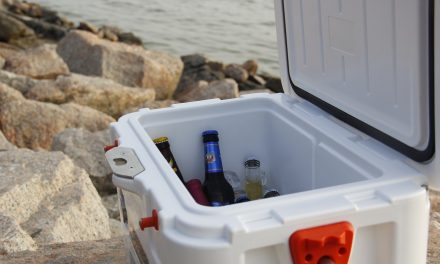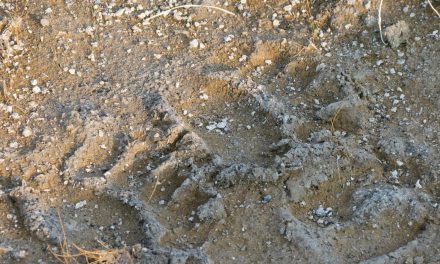Hauling around 10-liter containers of drinking water is nobody’s idea of a fun camping trip.
Yeah, you may be at a majestic waterfront with jaw-dropping marine views, but what is good for fish may not necessarily be good for the human body. Just because we cannot see microorganisms swimming in the refreshingly clear lake, does not mean they are not there. Those cheeky little creatures are just waiting to infect you with terrible bouts of diarrhea. You should not blindly drink such water before you purify it.
Purifying water when camping doesn’t need to be rocket science. There are several methods of turning wild water into safe drinking water. You can boil it, use carbon filters, treat it with chemicals, or use more sophisticated methods like UV light purification.
Crystal Clear Water May Still Contain Pathogens

There is no guarantee that the pristine water you see in the rivers and lakes around you is safe to drink. There is a high probability of nasty bugs lurking in the sparkling stream water.
Waterborne Bacteria
Waterborne bacteria such as E. coli (Escherichia Coli) and Salmonella are single-celled organisms found in contaminated water sources. These bacteria can do a serious number on your digestive tract. Giardia is the number one parasite found in water in the United States. It is a protozoan that causes fatigue, diarrhea, and loss of appetite. It also goes by the name “Beaver Fever” because the parasite is passed through mammal feces.
Viruses in water
According to the Centers for Disease Control and Prevention (CDC), Norovirus is the leading cause of viral gastroenteritis among adults in the US. Like Giardia, it also spreads through fecal-oral transmission.
Water sources in the wild may also be contaminated by chemicals due to human influence. The names of these microbes alone should scare you enough to pay attention to the water you drink while out in the bush.
Of course, there is a limit to the amount of water you can take with you on a camping trip. However, there are ways to purify naturally sourced water and make it safe for consumption.
The Difference Between Filtration and Purification
Whereas all purified water has been filtered, not all filtered water is purified. Yes, it is a little confusing, but hang on – you’ll crack it in a bit.
With filtration, water is sieved through a type of carbon or iodine element to remove sediments, unwanted toxins, and chemicals. While camping, filtering water could be as basic as passing it through a clean bandana into a container. Water that has been filtered may be relatively cleaner than stream water, although it still contains harmful pathogens. This is where the purification process comes into play.
Water purification is a chemical process that makes pathogens inoperative. Purifying water will get rid of 90-95% of bacteria, viruses, parasites, algae, fungi as well as toxic metals such as copper and lead. Purification produces water that is free of most contaminants, but it will change the taste, smell, or appearance of the water.
Water purification processes you can use while camping

We have put together four ways of purifying water while camping:
1. Give ‘boiling point’ a whole new meaning
Being one of the oldest methods of water purification, boiling water is the safest and simplest way to kill microorganisms, especially while camping. As stated by the World Health Organization (WHO), boiling water at 158°F (70°C) will kill 99.999% of protozoa, viruses, and bacteria. All you need is a campfire and a cooking pot.
Boiling drinking water can be an inconvenience for some. It is time-consuming as you have to wait for the water to reach boiling point first, then wait for it to cool down again before you can drink it. It is advisable to filter the water before boiling to remove dirt and sediments. Boiling water also uses a lot of fuel, especially when using a wood fire. We recommend going camping with these stovetops that will not only give you instant fuel but will also save your campfire logs.
2. Carbon filters can save your digestive system
A portable water filter is a great option for campers as you could quickly turn wild water into drinking water. These lightweight gadgets allow you to pump water into a container through a filter that strains out contaminants. The important thing to note is the pore size of the filter. Pore sizes are measured in microns to indicate the size of the openings. A filter with a rating of one micron would sieve out Giardia, larvae, protozoa, and parasitic eggs.
Purchasing a water filter with a carbon or iodine element will help destroy even more contaminants. They are available in a wide range of sizes and prices, depending on your pocket size. Portable water filters also eliminate the need to lug around gallons of water during your camping trip.
On the downside, filters cannot catch bacteria or the Norovirus. To escape paranoia, you might want to boil the water after filtering it. The cheaper, hand-operated pump filters take time and energy to produce a small amount of drinking water. The more sophisticated the filter, the higher the cost.
3. Kill Stubborn Pathogens with Chemical Treatments
Chlorine and iodine are the most common, chemical water treatment methods used worldwide. Four drops of chlorine per liter of water will effectively eliminate most microorganisms. Alternatively, you can drop one chlorine tablet into a liter of water, let it dissolve for 4 hours and you will have water that is free of harmful pathogens. Iodine tablets are available at most camping stores and are easy to use. One tablet only needs about half an hour to purify a liter of water.
Using chlorine or iodine to purify water does have some drawbacks. They will destroy the nasty critters in the water, but they cannot remove certain parasites such as Cryptosporidium. These chemicals will also affect the taste and color of the water.
Ensure you use Iodine within 6 months of opening as manufacturers warn that it has an expiry date. It is best to consult your doctor in case you are allergic to iodine. People with thyroid disease or pregnant and breastfeeding women should avoid it.
4. Let There Be UV Light
Talk about a magic wand to destroy all pathogens! The Ultraviolet water purification treatment uses a baton fitted with a UV light bulb to expose microorganisms to UV radiation. UV light changes the DNA in the organism and stops microbes from reproducing, so even if they are ingested, they can do no harm.
The advantages of using UV treatments are many. It is an effective quick way to treat water that does not change the look or taste. It is a chemical-free option so anyone can use it. The wands are light in weight, easily portable and some can be charged using a normal USB connection.
On the minus side, once the water has been treated with UV light, it cannot under any circumstances be exposed to sunlight. This will reactivate the microbes, making them harmful again. This method is not as effective for cloudy water or water with a lot of sediment because the particles may block the UV rays from getting to pathogens. Battery replacement may become expensive in the long run while the unit itself is very fragile and can break easily.
During your next camping trip, instead of limiting yourself to two sips of water every hour, try one, or even two of these methods together. You can add a water purification method to your packing checklist. Trust us, your body will be forever grateful.
- Hammock Benefits: What The Tent Industry Doesn’t Want You Knowing - November 19, 2022
- How I Maintain My Hygiene When Camping - November 19, 2022
- How to Survive a Meet & Greet with a Bear - November 18, 2022






